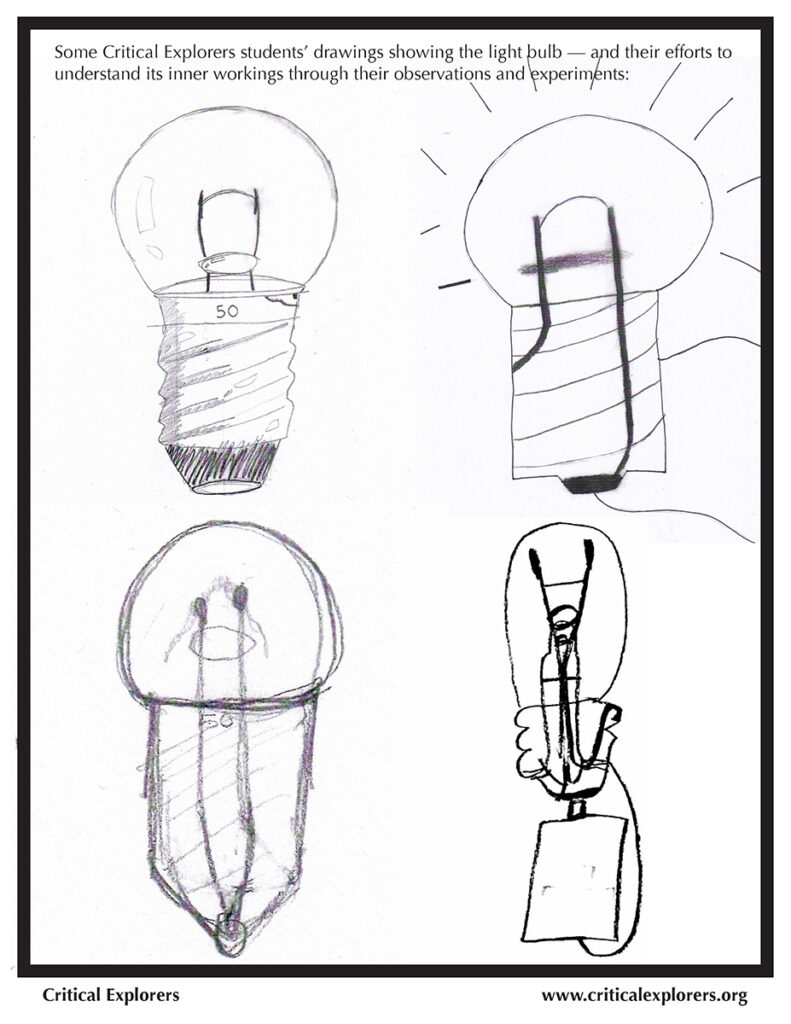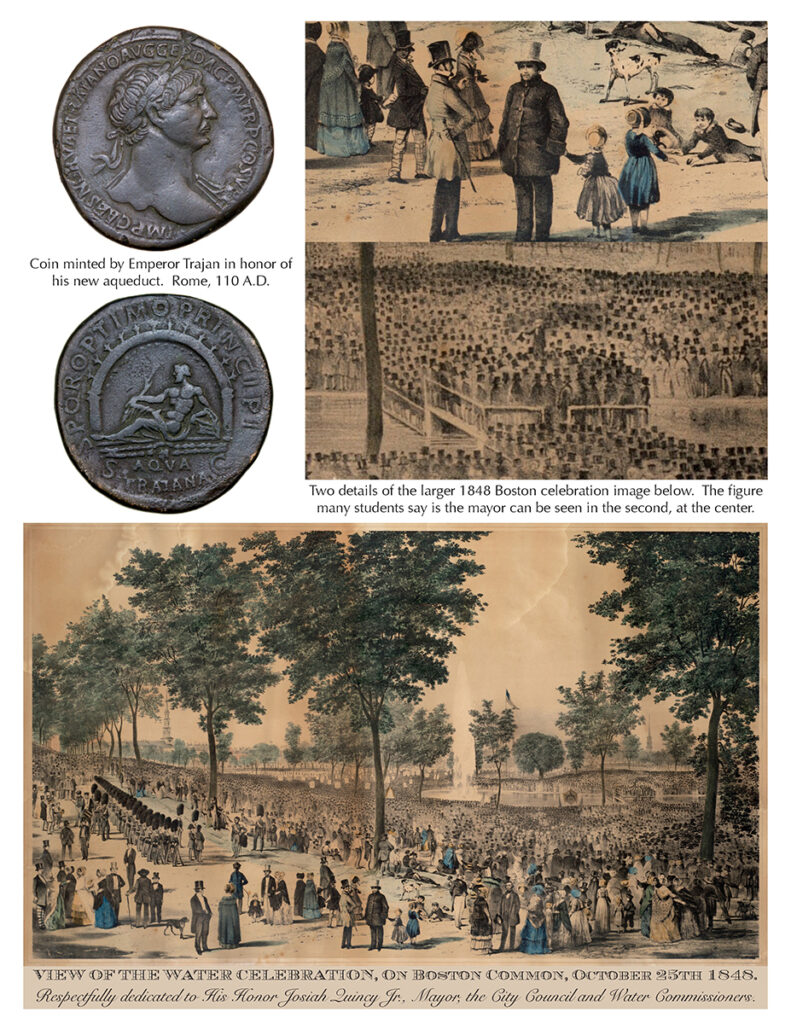Energy and Light: Experimentation in Teaching, Learning and Curriculum
Author: Alythea McKinney
Posted by Alythea
Why does Critical Explorers search for primary materials — and develop curricula around those materials — as part of our work with teachers and students? What kinds of materials does this work require, and what makes it different from what often happens in schools?
As they learn to teach through critical exploration, our collaborating teachers and workshop participants experiment with the roles they play in their classrooms, refraining from providing answers or evaluating ideas, and focusing more energy on listening as students engage with what is in front of them. When the teacher no longer occupies center stage, the materials she offers must catch students’ attention and help draw the group together. Rather than serving up factual information, they must help students begin to experience the unfolding rewards of close observation. And as teachers cede to students the power to point out, emphasize, and eventually evaluate details, themes, and connections, the materials must support students in taking on these complex responsibilities. To accomplish these remarkable feats, the materials must be multi-dimensional and interrelated, holding potential evidence from the areas of study teachers want students to think about. In collaborating with teachers, then, Critical Explorers seeks out objects through which each topic takes form in the material world. Specifically, we look for those the substance of the topic inhabits in ways that surprise and puzzle students, drawing them to discover that essence and to reveal and describe it.
An example in science — in teaching about electricity and circuits — is a light bulb, along with one or more batteries and pieces of copper wire. Students can connect the wire and bulb to the battery in various ways and notice which arrangements result in heat or light. They can look closely at the light bulb, using a magnifying glass, and draw what they see, showing how they think it is put together — what parts of the bulb are connected by its internal wire to which other parts. We can break open a light bulb so that everyone can peer inside and draw even more detail. As teachers invite them to share the diagrams and results of their experiments alongside their drawings of the inner workings of the light bulb, students think hard about electricity and about the rules they are discovering for creating pathways for current — and deeper understandings emerge.

Just as we choose the light bulb because it contains parts of a circuit the copper wire and battery can complete and light — and because it therefore holds and helps students reveal the essence of circuits and how they work — we choose images, texts, and other sources for social studies explorations because of the human experiences, perspectives, and voices that echo through them. Together, the values and concerns of individuals and societies become the phenomenon students experiment with — the power and current whose movement and effects students can detect and trace.
When they examine, for example, a coin that Emperor Trajan minted to celebrate the completion of his aqueduct, the Aqua Traiana, in ancient Rome — as well as an 1848 view of Boston Common overflowing with crowds celebrating that city’s first public water supply — the unexpected pairing draws students’ attention, allowing their thoughts about these historical events to unfold for their teachers and classmates. The objects’ origins are separated by oceans and centuries, but finding and describing the parallels between them brings distant governments and their accomplish- ments into relationship in students’ minds, making the differences all the more striking, and creating balance and tension, resonance and dissonance, that holds their focus, gives rise to questions, and sparks curiosity, driving them to explore further.

On the coin, and as students read a speech delivered in the Roman Senate in his honor, they find that Trajan stands alone, using his power and privilege — that of an emperor, almost a god — to bring the water into the city as if single- handedly, glorifying himself and further intensifying his power. On Boston Common, His Honor Josiah Quincy Jr. speaks — but the print is dedicated to the city council and water commissioners as well, and students say they can hardly see the mayor in the sea of Boston citizens cheering the first fountain of water to surge from the aqueduct into the city. Banners displayed that day, and other documents students read, immortalize the contributions of many, including even ordinary people who testified about their own wells and cisterns as a committee of the legislature conducted hearings on the proposed water system. The coin and image, selected for their continuities and contrasts — and the students themselves, working with the chosen images — juxtapose these historical characters, making larger groups of people, their experiences, and their values both surprising and discoverable.
CE students actively experiment with these carefully chosen historical objects — much as they do with the light bulb, battery, and copper wire — bringing to light, as they make connections between them, commonalities and differences among cultures and over time. This is how CE works in science, social studies, and any subject matter: Students examine the materials, arrange and connect them in various ways, pursue multiple, flexible questions that arise from their own observations, and make their own discoveries; teachers, because they can trust the interactions between the students and the materials to deepen the conversation, shift to listening closely and asking probing questions that help to extend engagement and reveal students’ evolving thinking.
Materials that embody each subject matter, channeling its energy — together with the research process through which we find and combine objects, while listening to class conversations to figure out what additional materials will help sustain those conversations further — are the crucial underpinnings of the students’ — and the teachers’ — experimentation and growth. By sharing the results of our materials research and curriculum design projects within and between our partner schools — and in our workshops and professional development sessions — we support both teachers and students in their new roles in their classrooms, promoting deep thinking and expanding the practice of student-centered teaching and learning.
Alythea McKinney is the Director of Critical Explorers.